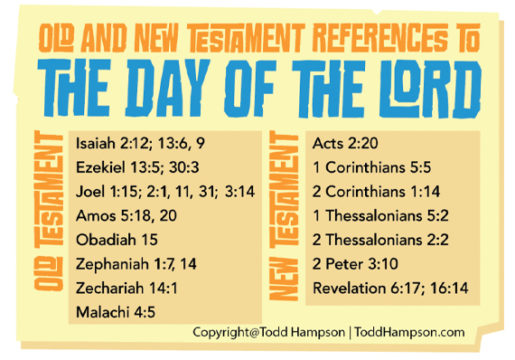

Another interesting detail related to the setting John describes when he received the visions of Revelation is found in verse 10, where John wrote, “On the Lord’s Day I was in the Spirit, and I heard behind me a loud voice like a trumpet.”
The literal translation of this would be rendered, “I was in the spirit on the day of the Lord.” The Day of the Lord is the term the Old Testament uses to refer to the tribulation period. It’s possible John could have been referring to the Lord’s day, or Sunday, but many Bible scholars say John was indicating that the Lord had taken him—in the spirit realm—to witness key events of the tribulation.
It is worthwhile to search the term “Day of the Lord” and read various passages in the Old Testament. Revelation is a distinctly Old Testament book. It has 404 verses and over 800 references or allusions to the Old Testament, including the Day of the Lord.
The Day of the Lord, the 70th “Week” of Daniel 9, and the tribulation period are one in the same. Revelation is primarily (chapters 6-19) about this short time period—although there is so much more to the Bible’s final book. We’ll continue looking at some overlooked and amazing applications from the book of Revelation in the coming weeks, so stay tuned!
To learn more about the book of Revelation and how it impacts you today, purchase your copy of The Non-Prophet’s Guide™ to the Book of Revelation at your favorite online bookstore, OR VISIT: TheNonProphetsGuide.com for more information.
